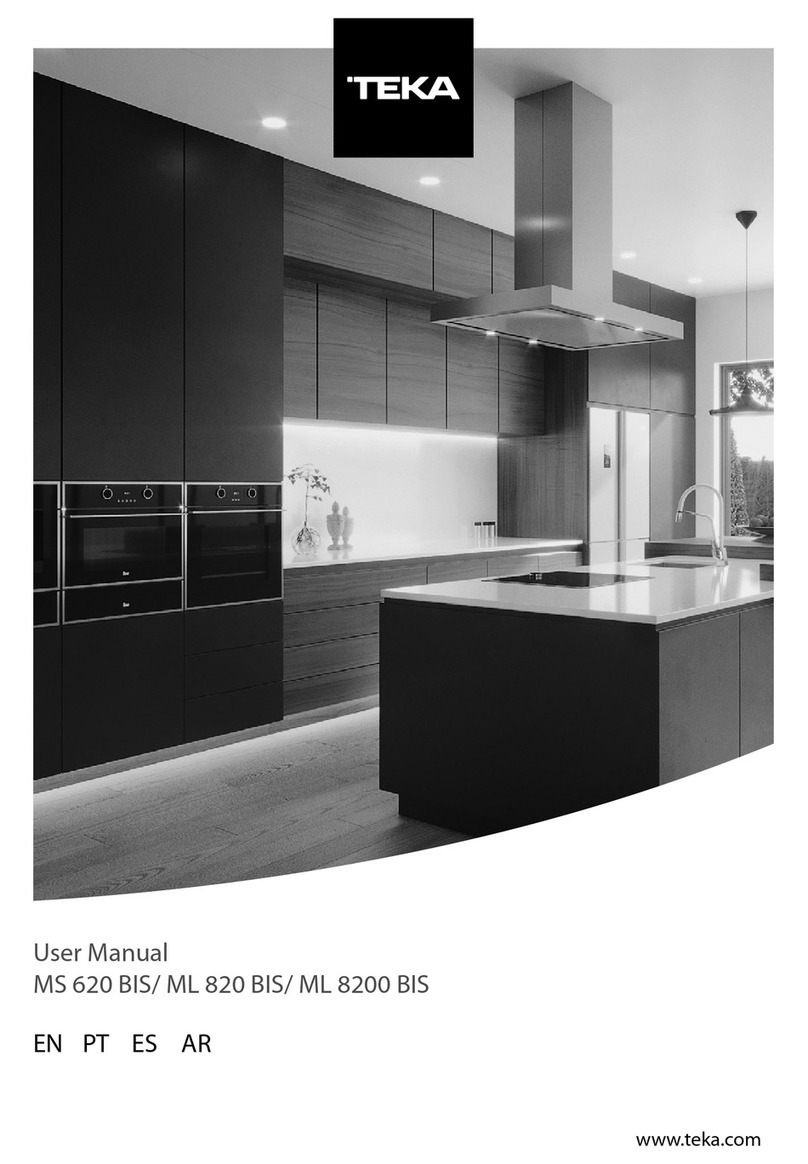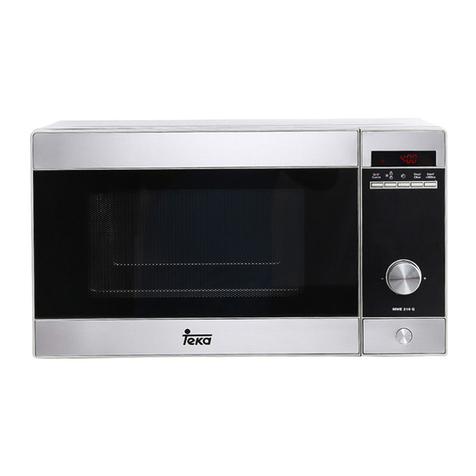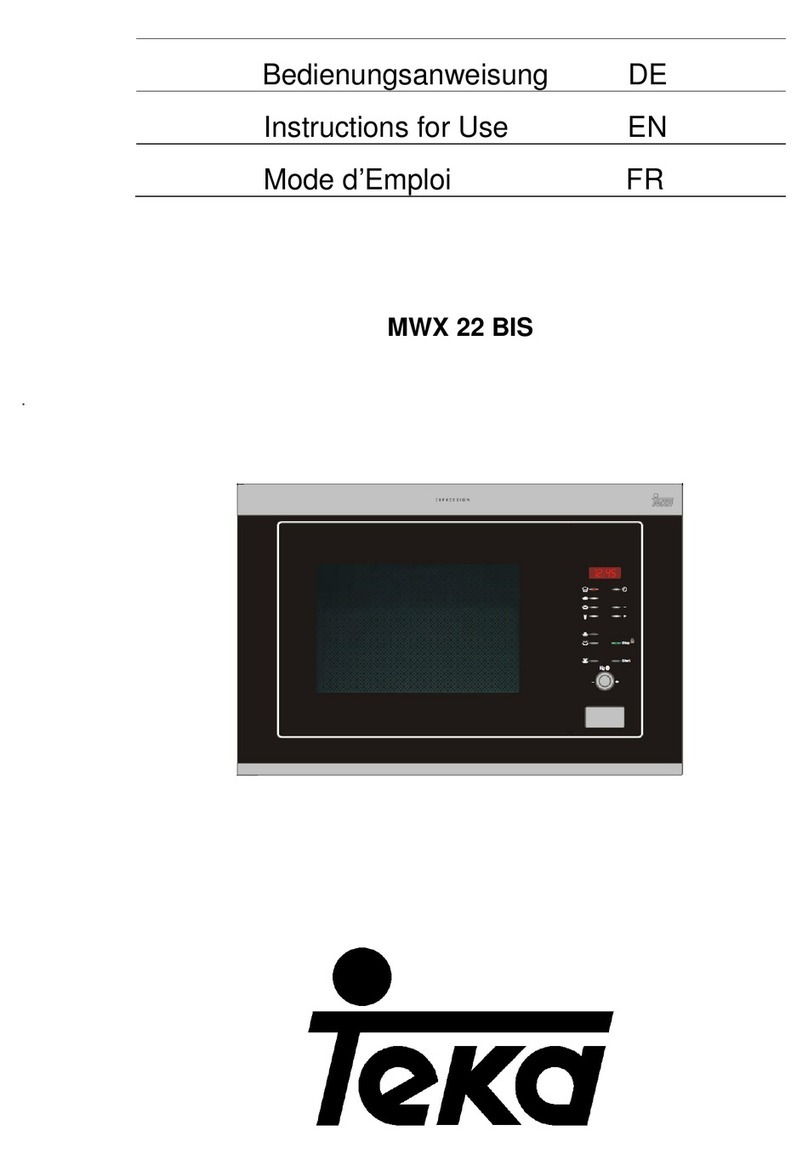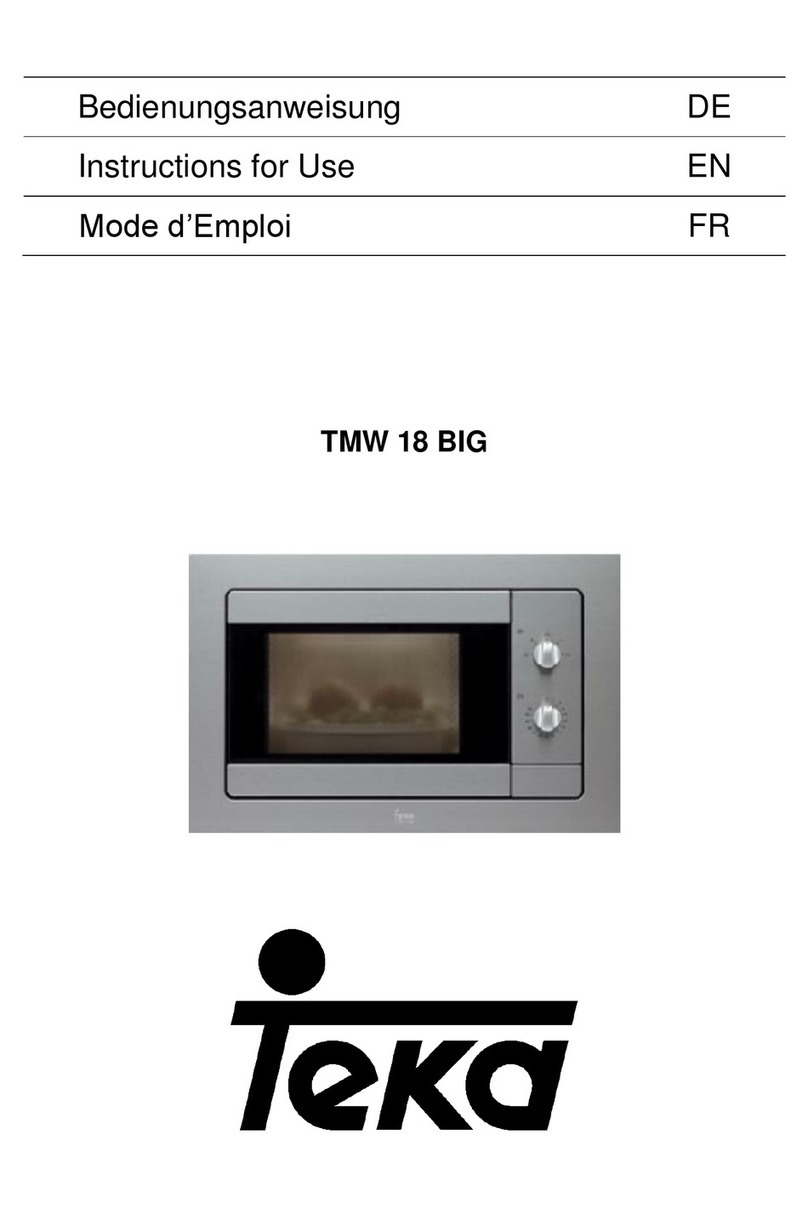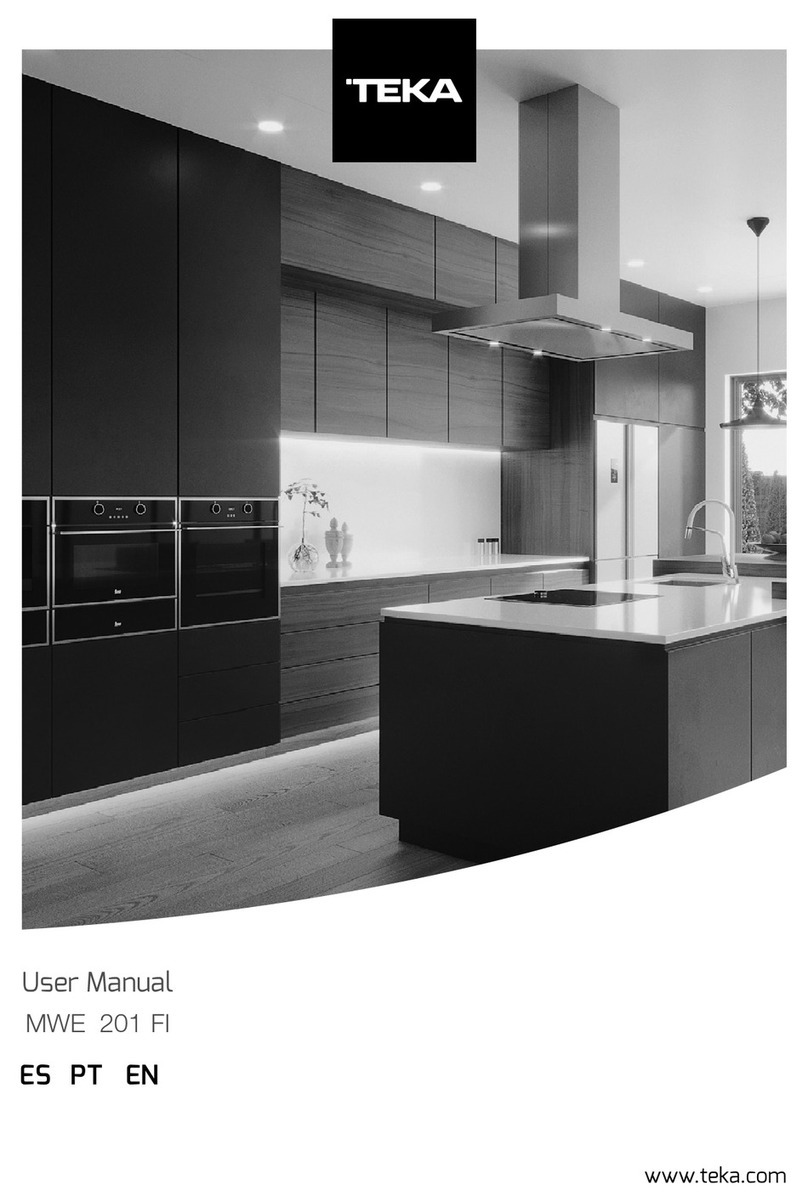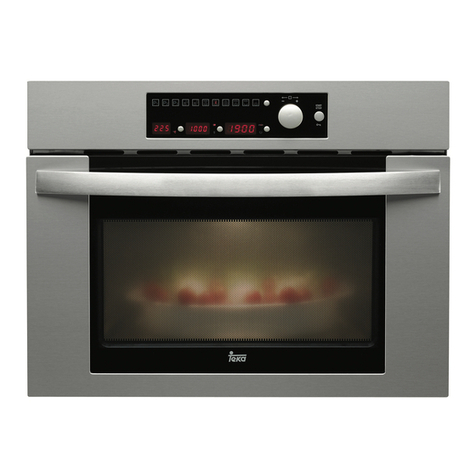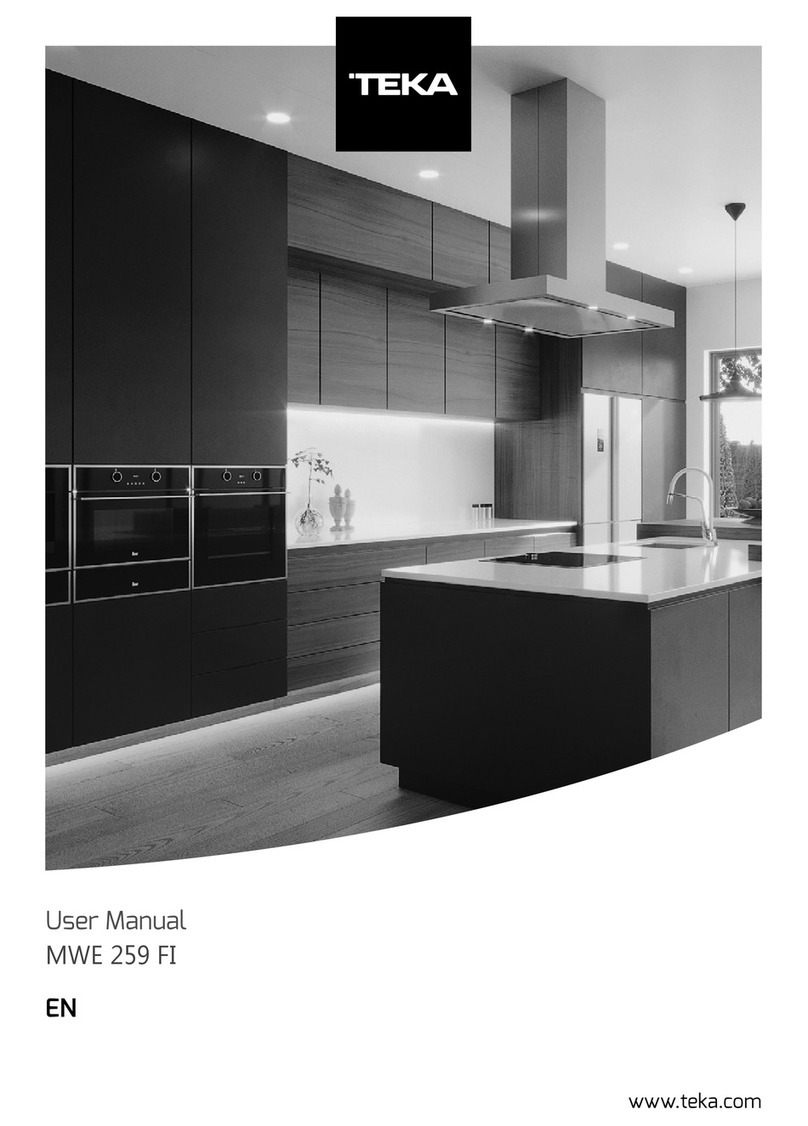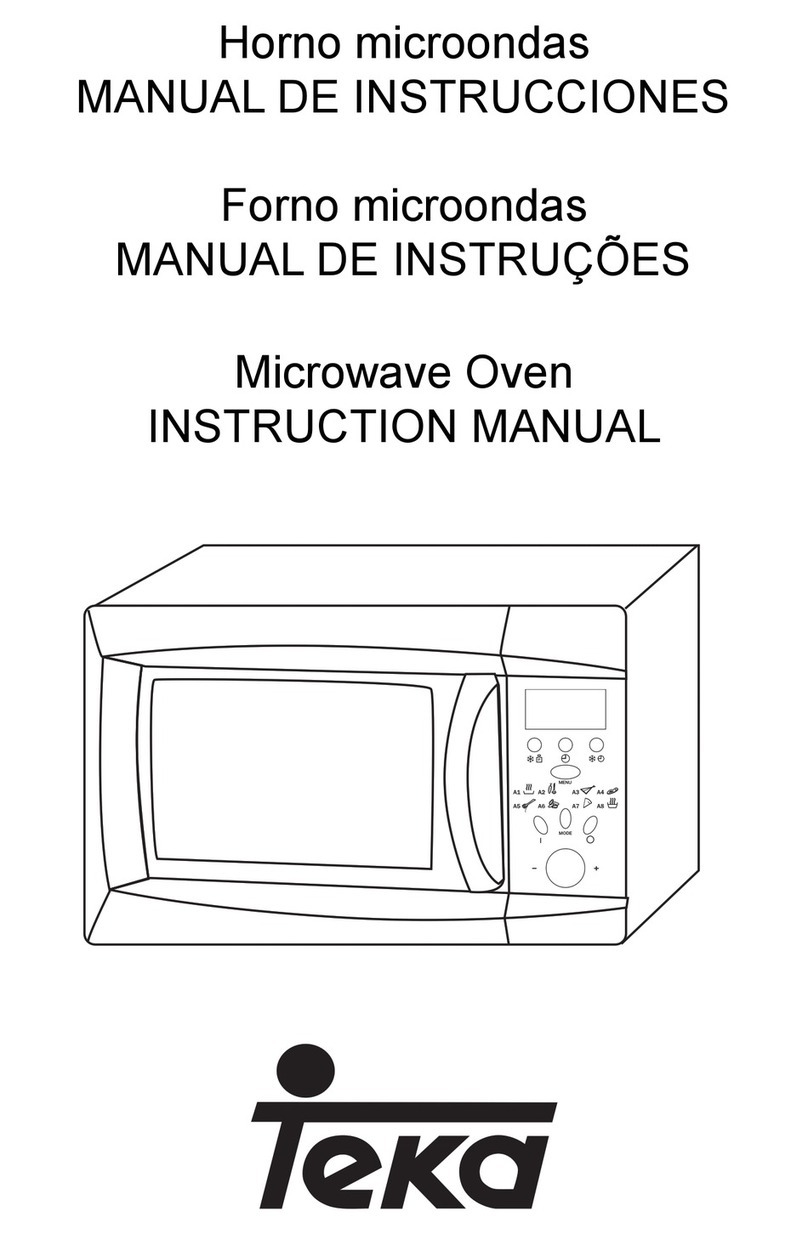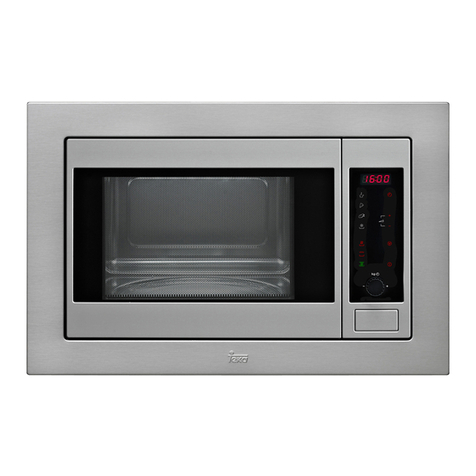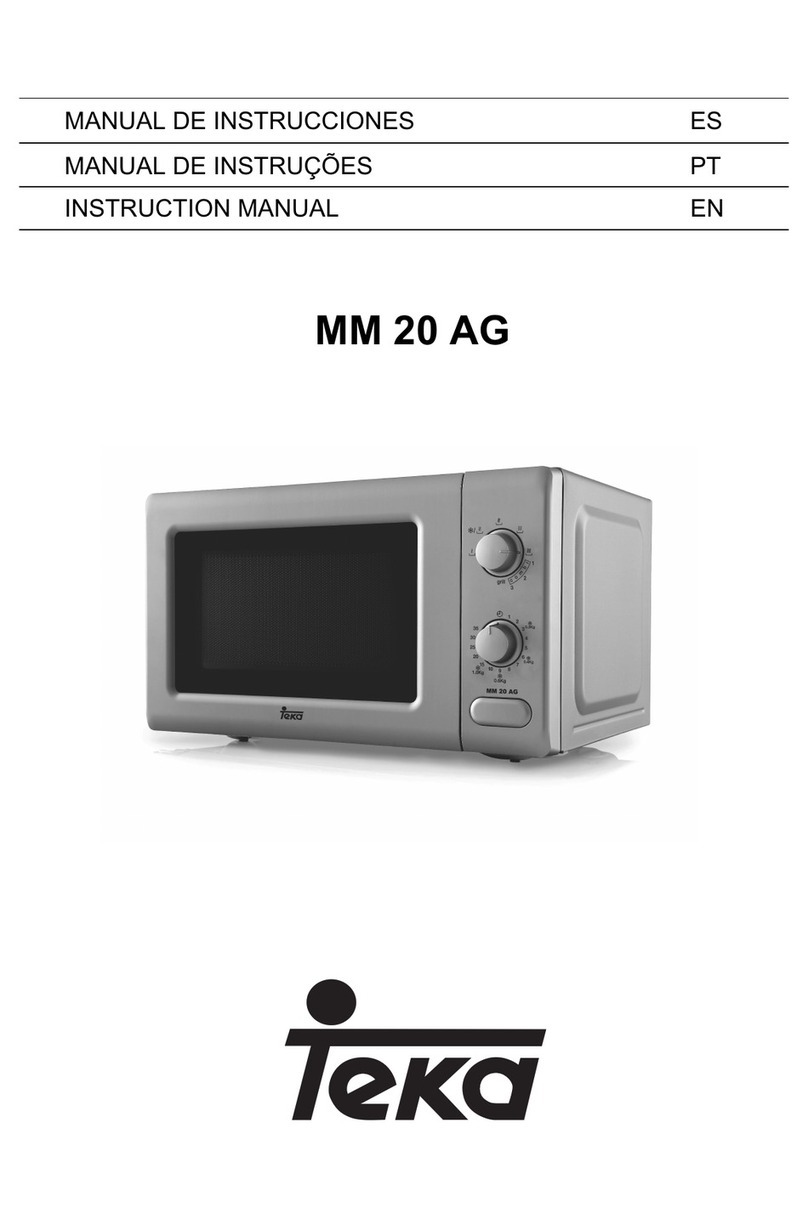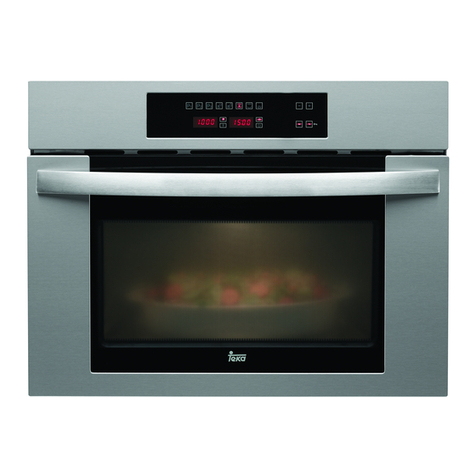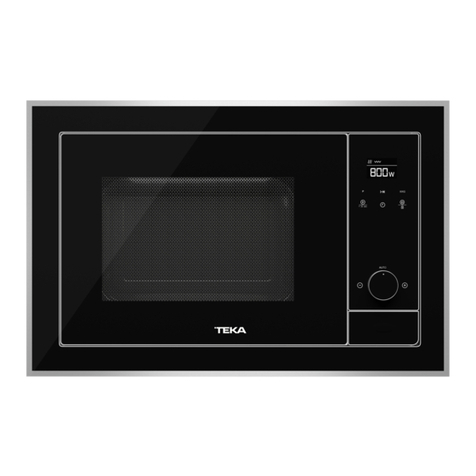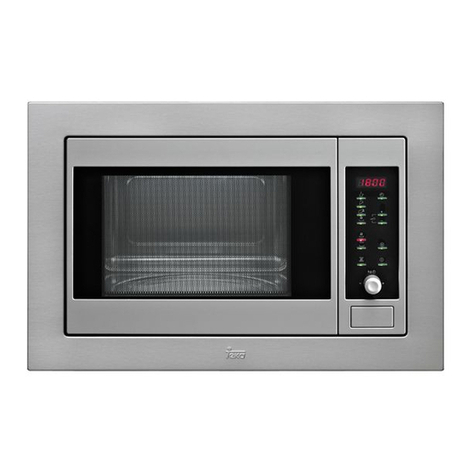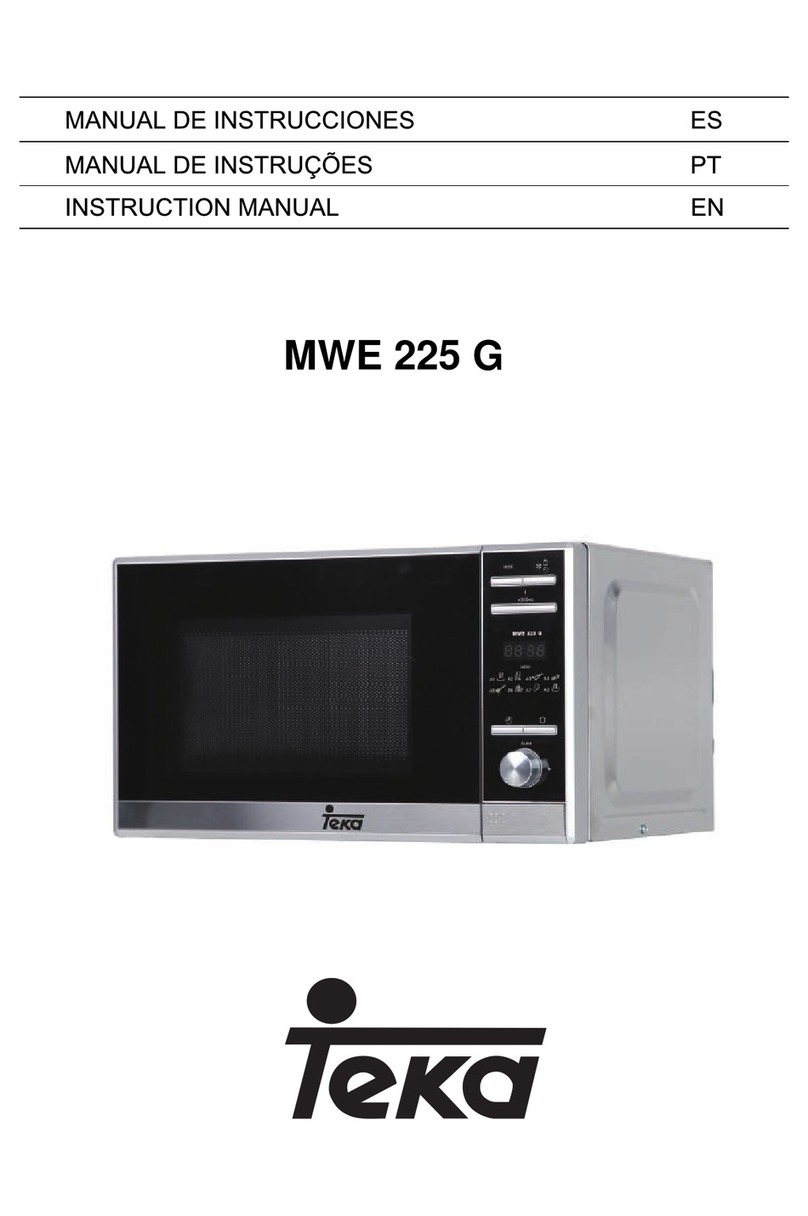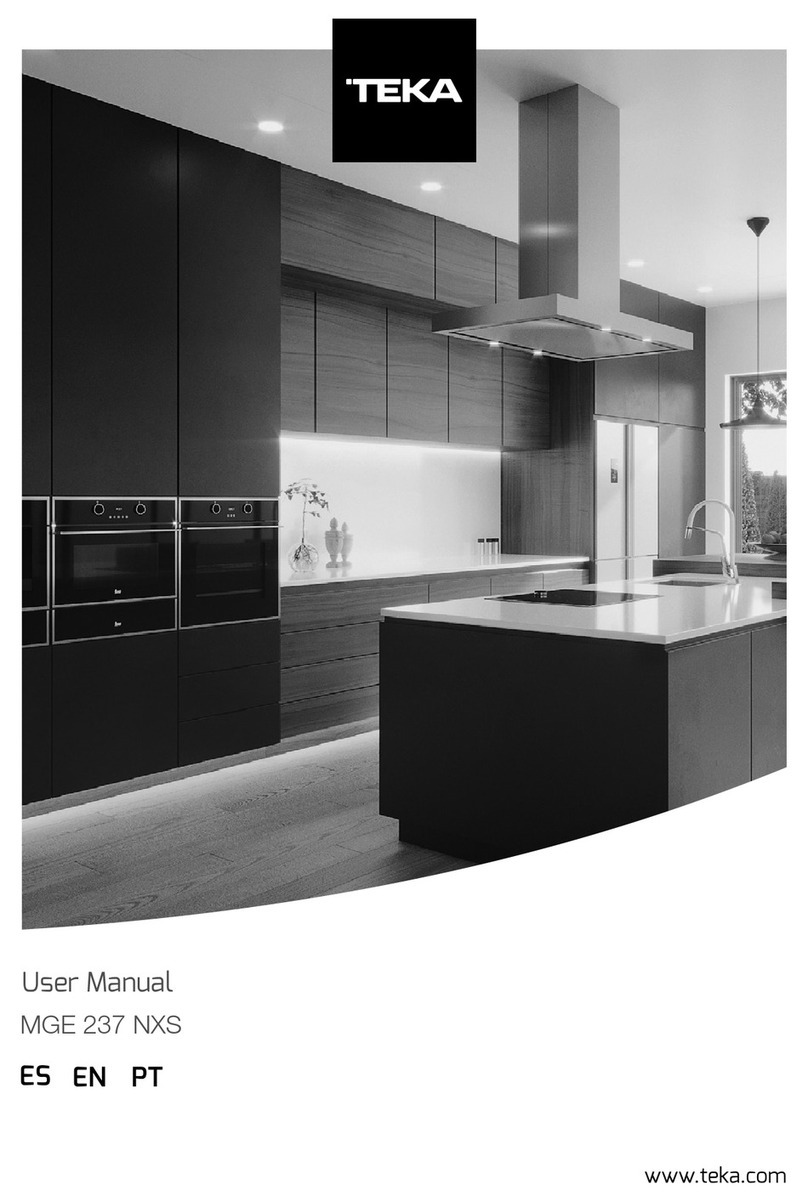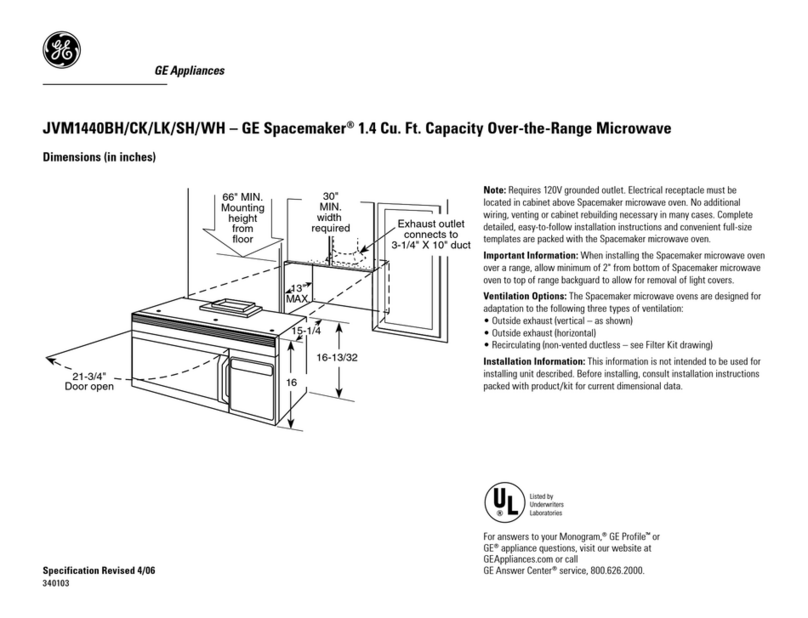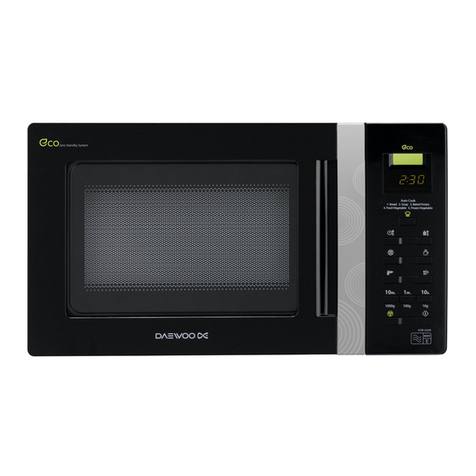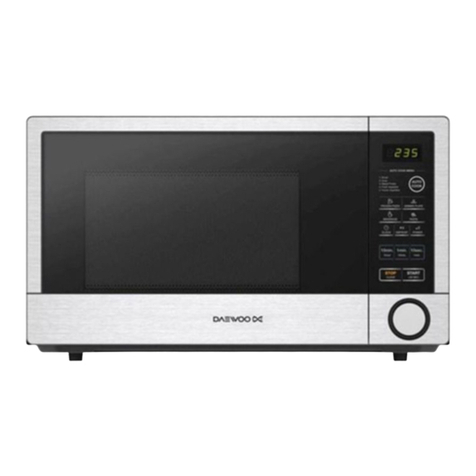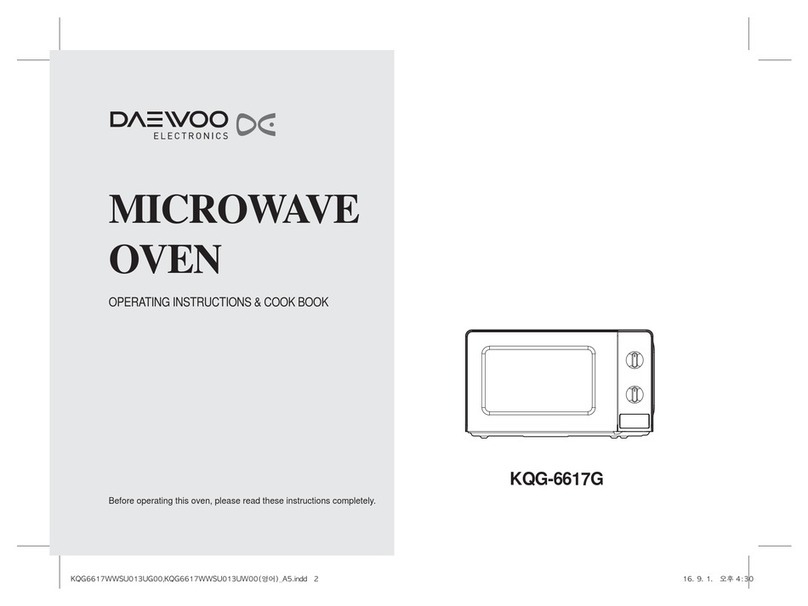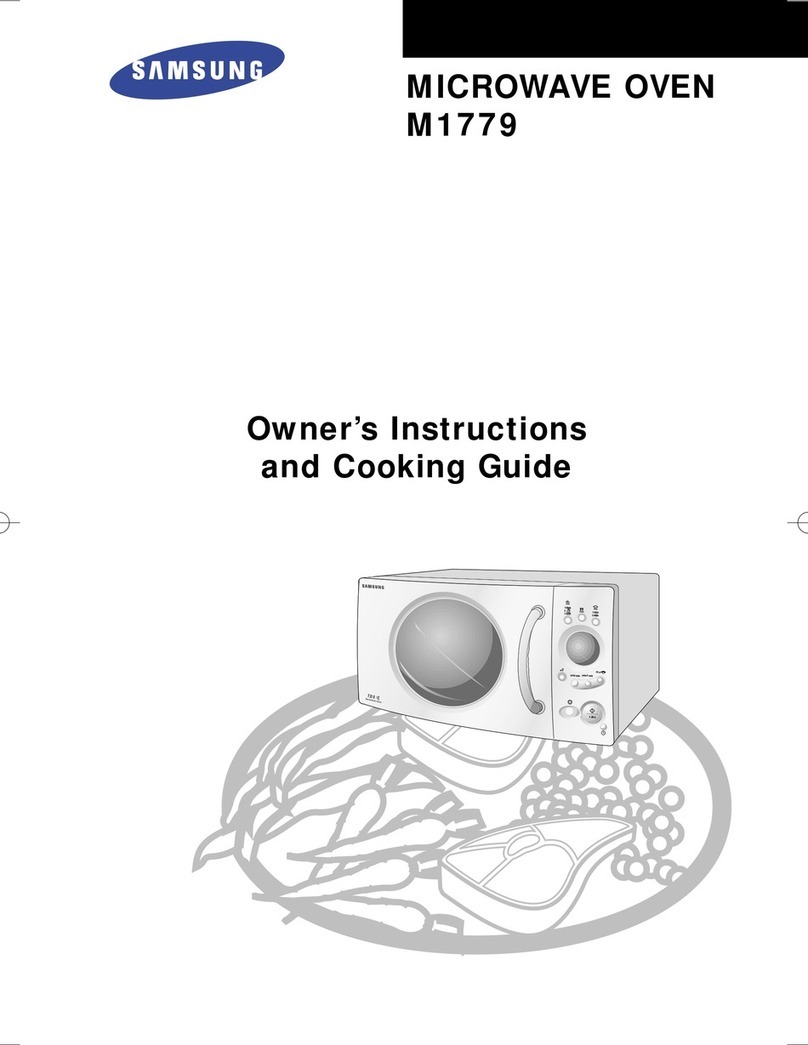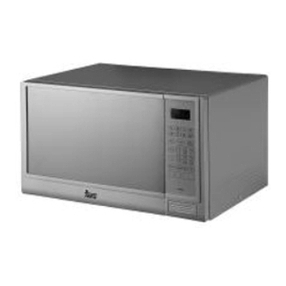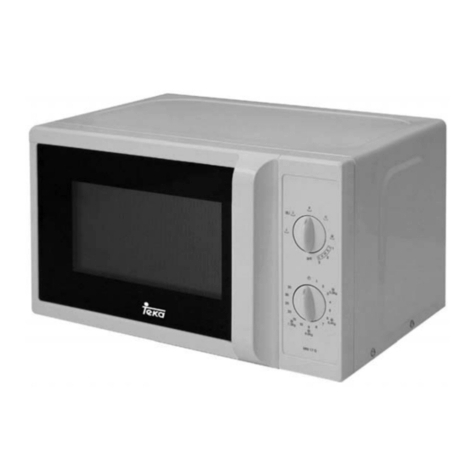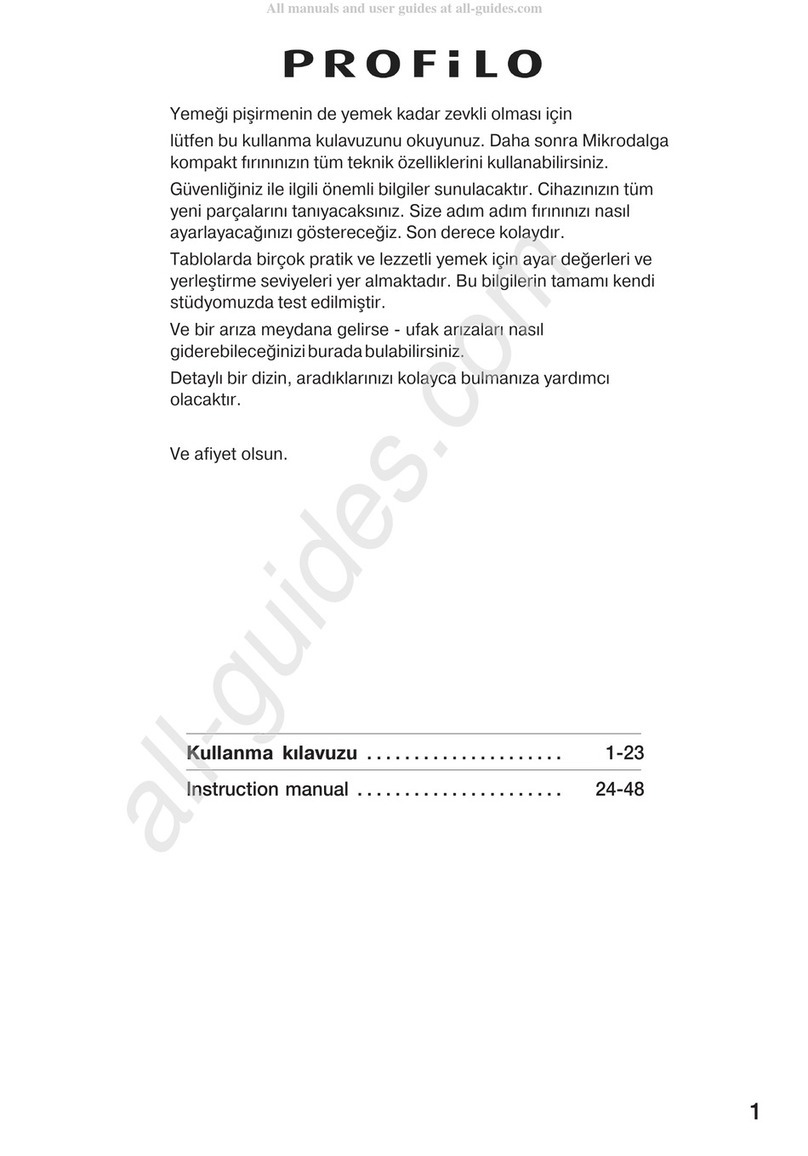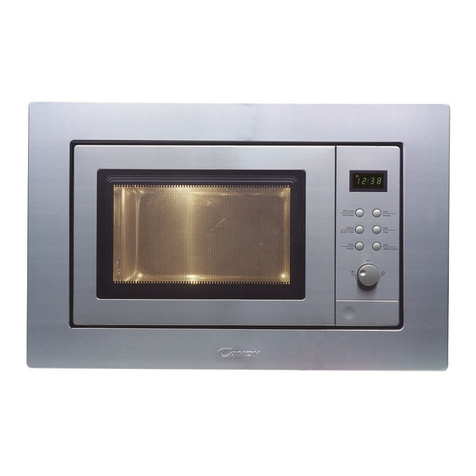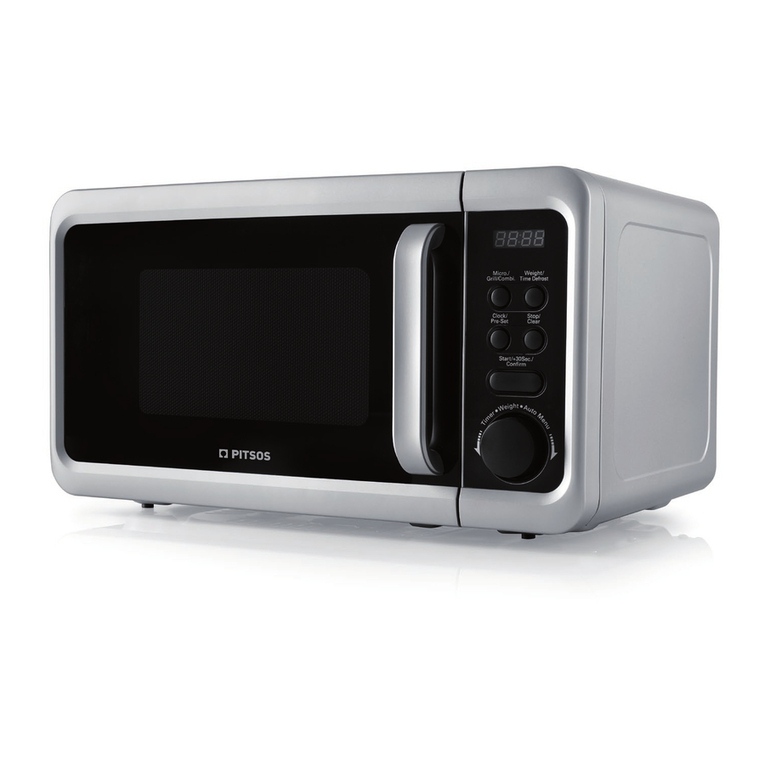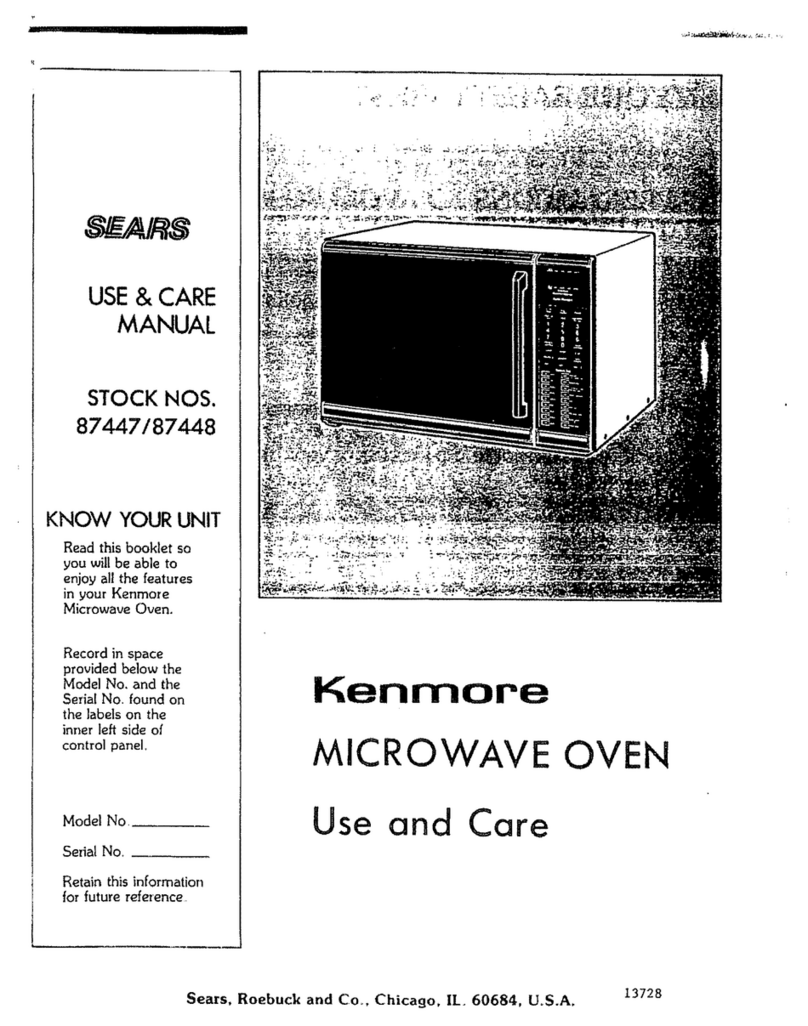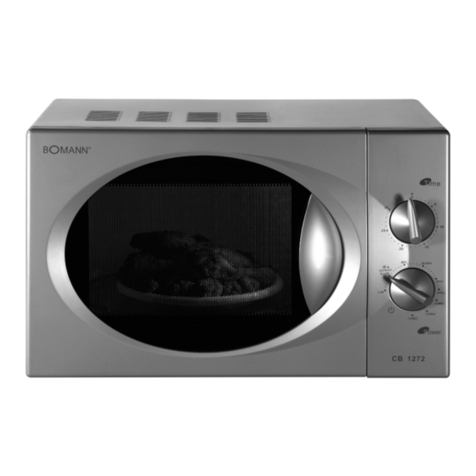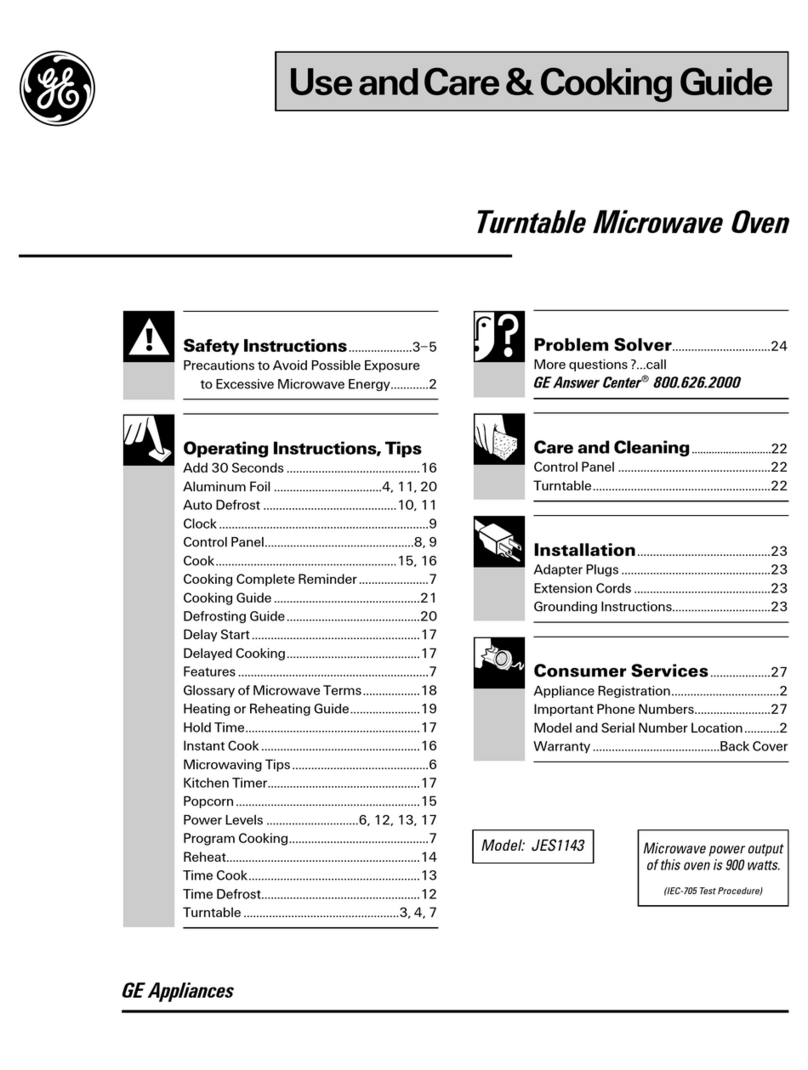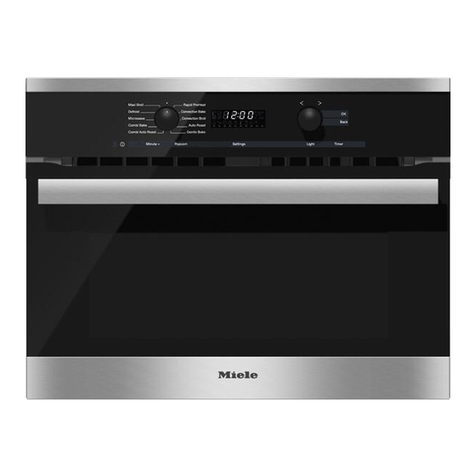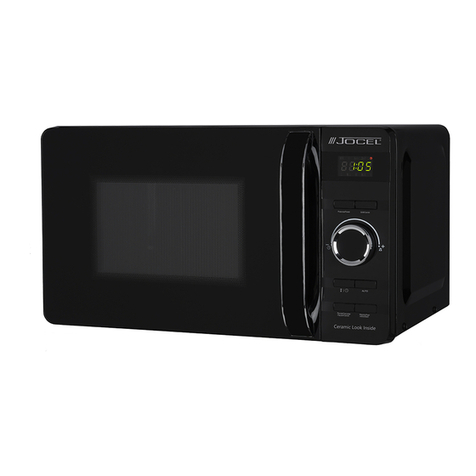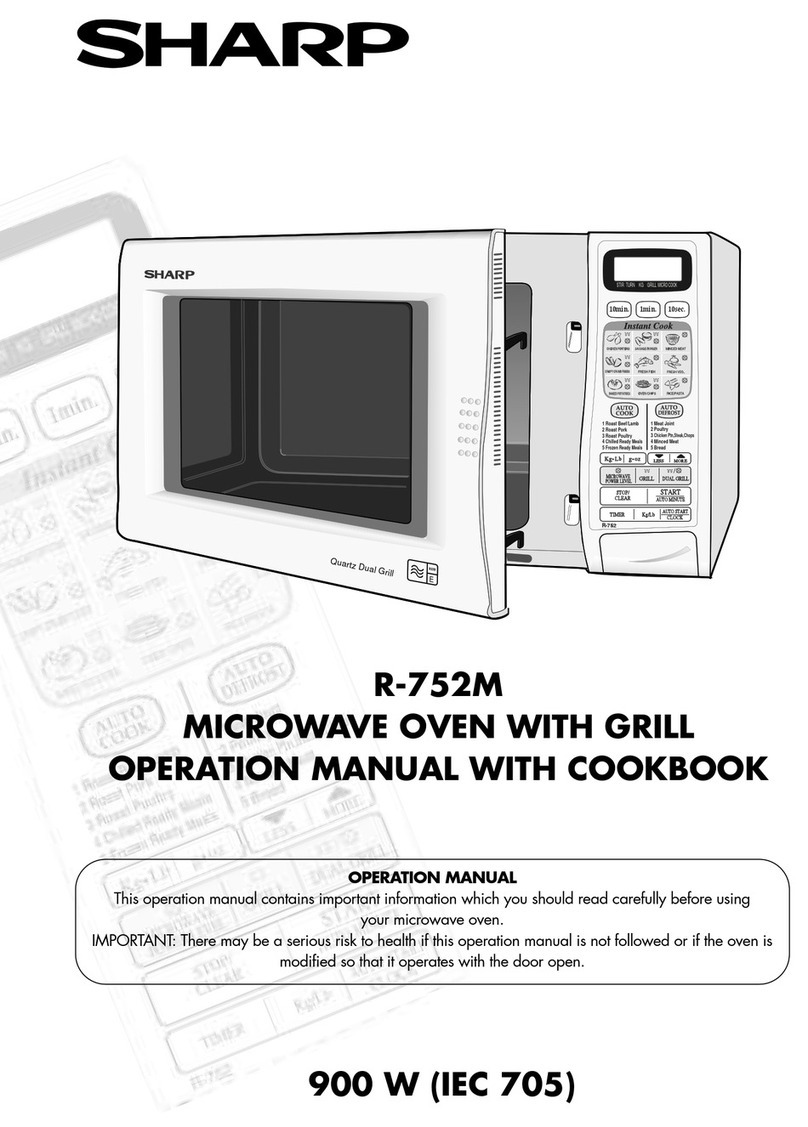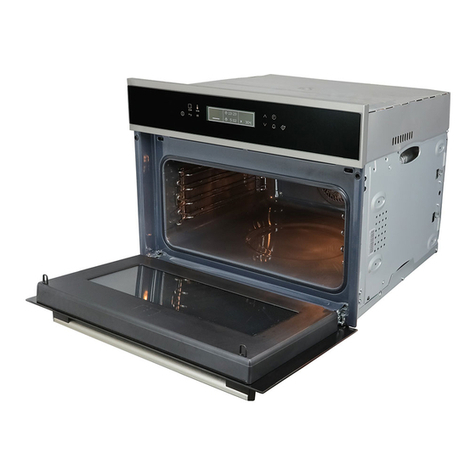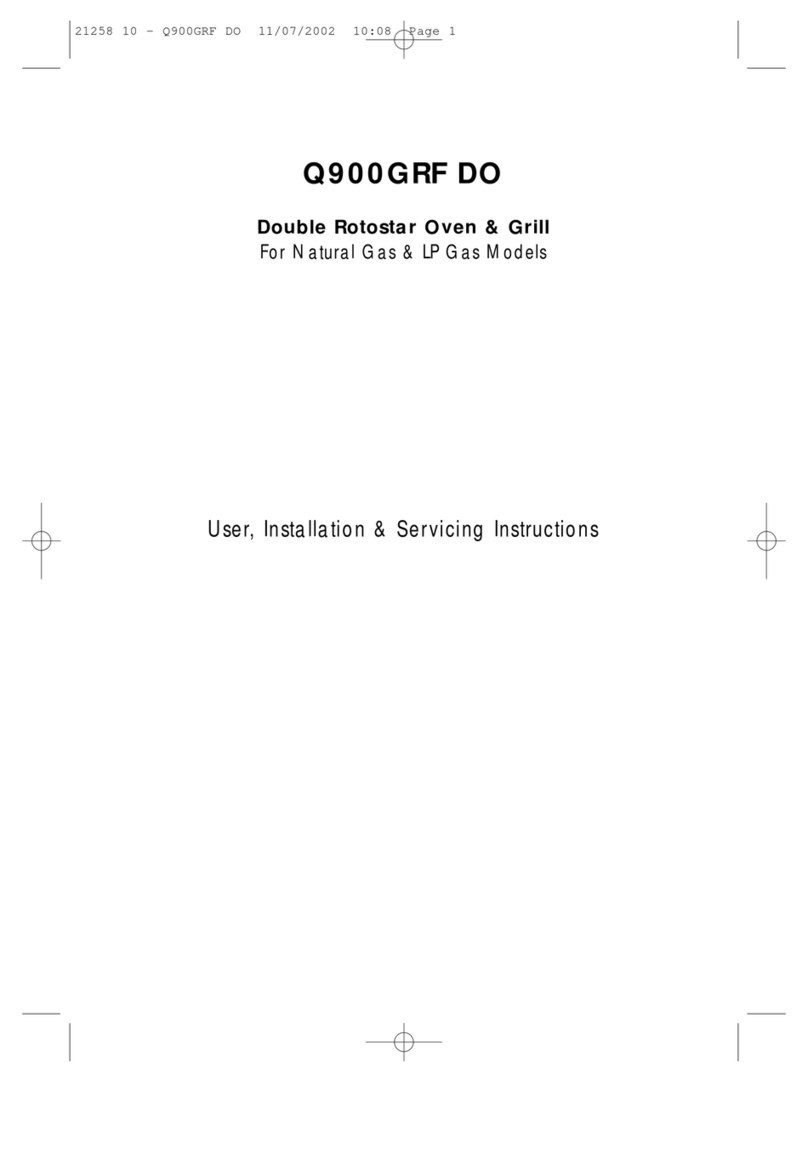Microwave safety
Warning! Never leave the oven unwatched,
especially when using paper, plastic or other
combustible materials. These materials can
char and may fire. FIRE RISK!
Warning! If you see smoke or fire, keep the
door closed in order to smother the flames.
Switch off the oven and take the plug out of
the socket or cut off the oven power supply.
Warning! Do not heat pure alcohol or alcoholic
drinks in the microwave. FIRE RISK!
Warning! Do not heat liquids or other foods in
closed containers since these may explode
readily.
Warning! This appliance is not intended for
use by persons (including children) with
reduced physical, sensory or mental
capabilities, or lack of experience and
knowledge, unless they have been given
supervision or instruction concerning use of
the appliance by a person responsible for their
safety.
Warning! Children should be supervised to
ensure that they do not play with the
appliance.
Warning! If the oven has a combined function
mode (microwave with other means of
heating), children should not be allowed to use
the oven without adult supervision on account
of the high temperatures generated.
Warning! The oven cannot be used if:
- The door does not close correctly;
- The door hinges are damaged;
- The contact surfaces between the door and
the oven front are damaged;
- The door window glass is damaged;
- There is frequent electrical arcing inside the
oven even though there is no metal object
inside. The oven can only be used again
after it has been repaired by a Technical
Assistance Service technician.
During use the appliance becomes hot. Care
should be taken to avoid touching heating
elements inside the oven.
Warning: Accessible parts may become hot
during use. Young children should be kept
away.
Beware!
Never heat baby foods or drinks in bottles or
jars with the teats or lids on them. After
heating the food mix or shake well so that the
heat is spread evenly. Check the food
temperature before feeding this to the child.
DANGER OF BURNING!
To avoid food overheating or burning it is very
important not to select long time periods or
power levels that are too high when heating
small quantities of food. For example, a
bread roll can burn after 3 minutes if the power
selected is too high.
For toasting, use just the grilling function and
watch the oven all the time. It you use a
combined function to toast bread it will catch
fire in a very short time.
Make sure you never catch the power cables of
other electrical appliances in the hot door or
the oven. The cable insulation may melt.
Danger of short-circuiting!
Take care when heating liquids!
When liquids (water, coffee, tea, milk, etc.) are
nearly at boiling point inside the oven and are
taken out suddenly, they may spurt out of their
containers. DANGER OF INJURIES AND
BURNS!
To avoid that type of situation when heating
liquids, put a teaspoon or glass rod inside the
container. (The spoon cannot come in contact
with the cavity walls - minimum distance 3 cm)
